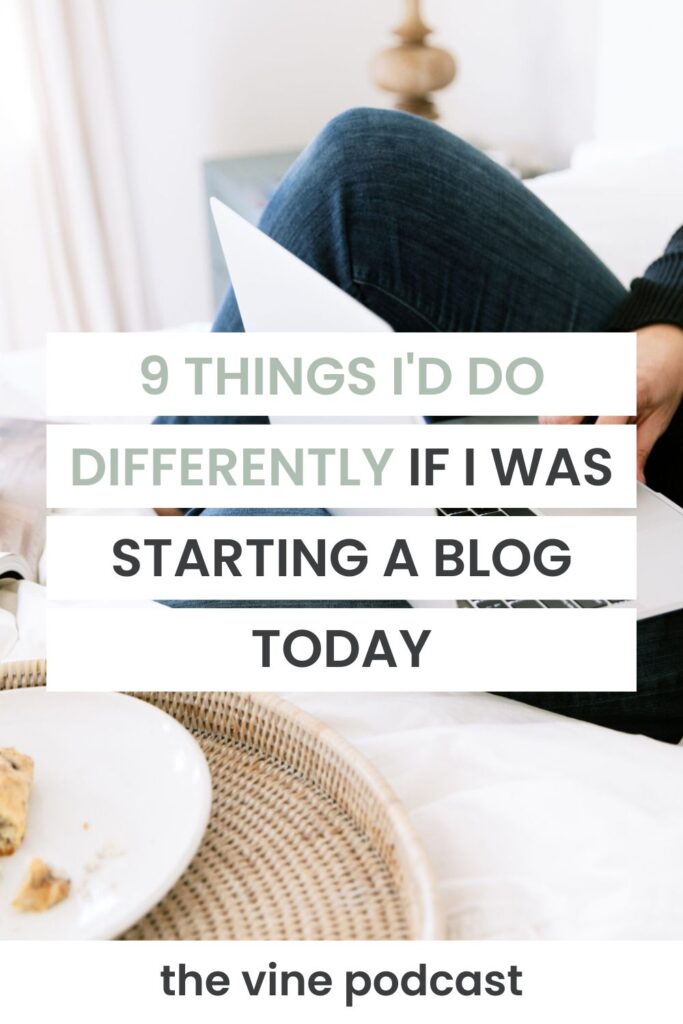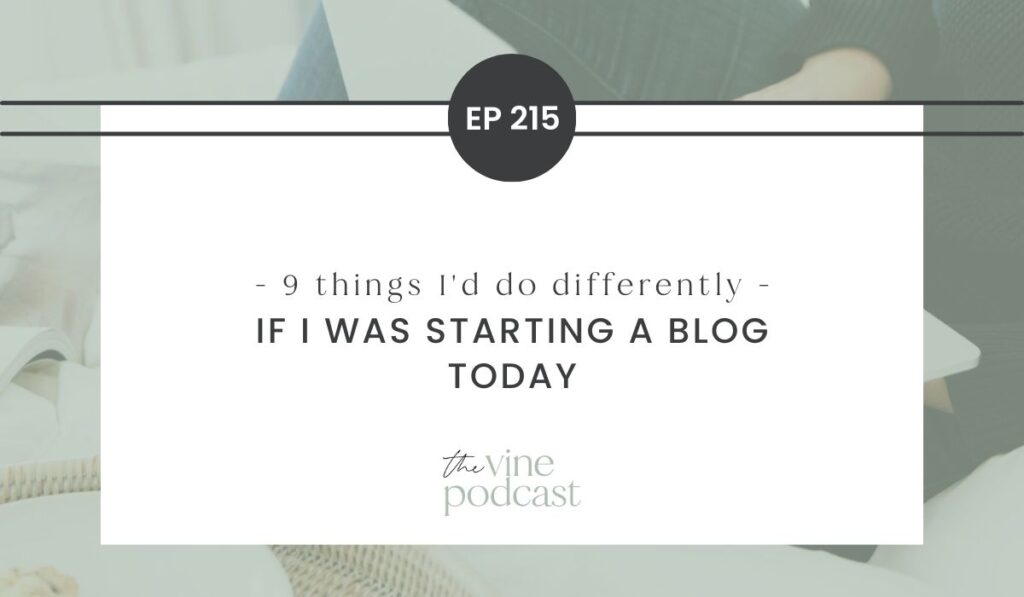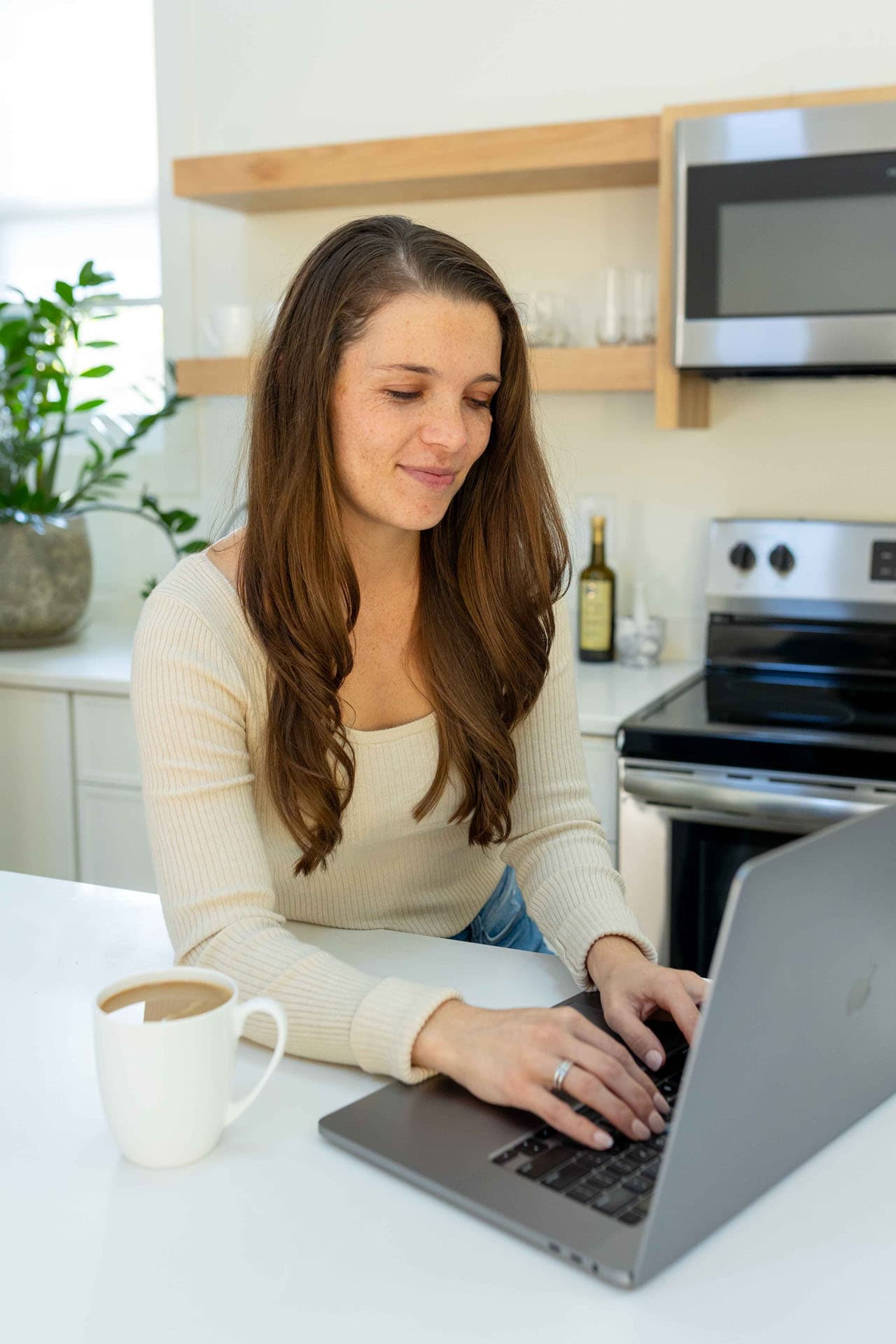Have you ever looked back at your blogging journey and thought, “If only I knew then what I know now”? If you’ve been blogging for more than a year, you’ve probably had that exact moment of reflection. The food blogging industry has transformed dramatically over the past decade, and what worked five years ago might not be the best strategy today. Follow along as I share my honest take on what I’d do differently if I were starting a food blog from scratch today.
Whether you’re just starting out or you’ve been blogging for years, these nine strategies can help you build a more sustainable, profitable, and engaging food blog that truly connects with your audience.


1. Start on Self-Hosted WordPress From Day One
This might seem obvious, but you’d be surprised how many bloggers still start on other platforms or even WordPress.com without realizing the limitations they’re accepting. Self-hosted WordPress gives you complete control over your site, unlimited customization options, and the ability to monetize however you choose.
Why this matters:
- Complete ownership of your content and data
- Unlimited plugin and theme options
- Better SEO capabilities
- No restrictions on monetization
- Professional appearance and functionality
If you’re currently on another platform, don’t panic – but do start planning your migration. The sooner you make the switch, the easier it will be.
2. Build Your Audience With Strategic Opt-Ins
Growing traffic is important, but growing an engaged email list is crucial for long-term success. Strategic opt-ins – free resources that solve a specific problem for your ideal reader – are the key to attracting the right people to your email list.
Effective opt-in ideas for food bloggers:
- Recipe collections for specific dietary needs
- Meal planning templates
- Kitchen equipment guides
- Seasonal cooking guides
- Printable grocery lists
The key is knowing exactly who your ideal reader is and what they need most. This brings us to an important sub-point: get crystal clear on your niche and audience from the beginning. The more specific you can be, the easier it becomes to create opt-ins that truly resonate.
3. Email Your List Consistently and More Often
Here’s a truth that might surprise you: consistent email marketing can drive 800-1200 clicks per email when done right. That’s traffic you control, unlike the unpredictable nature of search engine algorithms or social media reach.
Email marketing best practices:
- Aim for consistency over perfection
- Send at least weekly, but 2-3 times per week can be even better
- Provide value in every email, not just promotions
- Track your open rates and click-through rates
- Remember: this is traffic you control, not dependent on algorithms
Think of your email list as your most valuable asset. These are people who’ve specifically asked to hear from you – treat that permission with respect and consistency.
4. Focus on Video Content
We all know video is important, but many of us (myself included) resist it because it feels challenging or outside our comfort zone. Here’s the thing: you’ll never get better at video unless you actually do video.
Video strategies for food bloggers:
- Start with short-form content for social media
- Focus on volume and consistency over perfection
- Document your cooking process
- Share quick tips and techniques
- Show your personality – people connect with people
Remember, mastery comes from repetition. The more videos you create, the more comfortable and skilled you’ll become.

5. Connect With Your Audience and Understand Their Pain Points
It’s easy to get caught up in driving traffic numbers, but real success comes from understanding who’s actually visiting your site and what they need. You might not be able to personally connect with thousands of monthly visitors, but you can still speak directly to their needs.
Ways to better understand your audience:
- Survey your email subscribers
- Engage in comments and social media
- Pay attention to the questions people ask
- Look at your most popular content for clues
- Remember: you are not your ideal reader
Sometimes the people you’re trying to help are right in front of you – friends, family members, or community members who represent your ideal audience.
6. Create a System for Maintaining Content Updates
This might be the most important tip for long-term success. Many bloggers (Madison included) fall into the “publish and ghost” trap – creating content and then never touching it again. This is a missed opportunity for improved SEO and better user experience.
Content maintenance system essentials:
- Schedule regular content audits (monthly or quarterly)
- Update recipes based on reader feedback
- Refresh photos as your skills improve
- Add new tips or variations to existing recipes
- Monitor performance and update underperforming posts
Start this system early, even if you only have a handful of posts. It’s much easier to maintain 50 posts than to suddenly tackle 1,000 neglected pieces of content.
7. Hire Out Writing Sooner
If you can afford it, hiring writers can be a game-changer for content volume and quality. This allows you to step into a more strategic role in your business while ensuring consistent content creation.
Benefits of hiring writers:
- Dramatically increase content output
- Free up time for other business activities
- Often get better quality content than you might produce yourself
- Allow you to focus on strategy and business development
- Reduce burnout and overwhelm
Consider this investment as soon as it becomes financially viable – it might be worth prioritizing over other business expenses.
8. Build Multiple Revenue Streams From the Beginning
Don’t put all your eggs in one basket, even if those other baskets seem small at first. That $50-per-month affiliate income might seem insignificant now, but it can scale and grow with your blog.
Revenue streams to consider:
- Affiliate marketing
- Sponsored content
- Digital products (ebooks, meal plans, courses)
- Physical products
- Services or coaching
- Advertising networks
The key mindset shift: it doesn’t have to be big to be valuable. Small revenue streams can grow into significant income sources over time.
9. Build Authority Through Podcasting or YouTube
This might be Madison’s favorite tip, and for good reason. Creating a podcast or YouTube channel sets you apart from bloggers who only write. It establishes you as an authority in your niche and creates a different kind of connection with your audience.
Benefits of podcasting or YouTube:
- Establishes you as an authority
- Creates deeper audience connection
- Differentiates you from other bloggers
- Helps you find your voice and messaging
- Opens doors to collaboration opportunities
- Can be repurposed across multiple platforms
The magic happens when you start speaking about your niche regularly – you’ll discover clarity about your audience, your message, and your business direction that writing alone might not provide.

Taking Action: Where to Start
These nine strategies might feel overwhelming if you’re trying to implement them all at once. Choose 1-2 that resonate most with your current situation and start there. Remember, the goal isn’t perfection – it’s progress.
If you’re a new blogger, you have the advantage of implementing these strategies from the beginning. If you’re an established blogger, don’t despair – it’s never too late to pivot and improve your approach.
The food blogging landscape will continue to evolve, but these foundational strategies will serve you well regardless of what changes come next. Focus on building genuine connections with your audience, creating valuable content, and diversifying your approach to both content creation and revenue generation.
Call to Action
Ready to transform your food blog? Start by choosing one strategy from this list and implementing it over the next 30 days. Whether it’s setting up your first opt-in, starting a content maintenance schedule, or recording your first video, taking action is the key to seeing results.
What resonates most with you from these nine strategies? Which one will you tackle first? Share your thoughts in the comments below – I’d love to hear about your blogging journey and the changes you’re planning to make.

ready to take your food blog to the next level?
We work with food bloggers looking to stand out of the crowd through custom brand and website design.


Leave a Comment